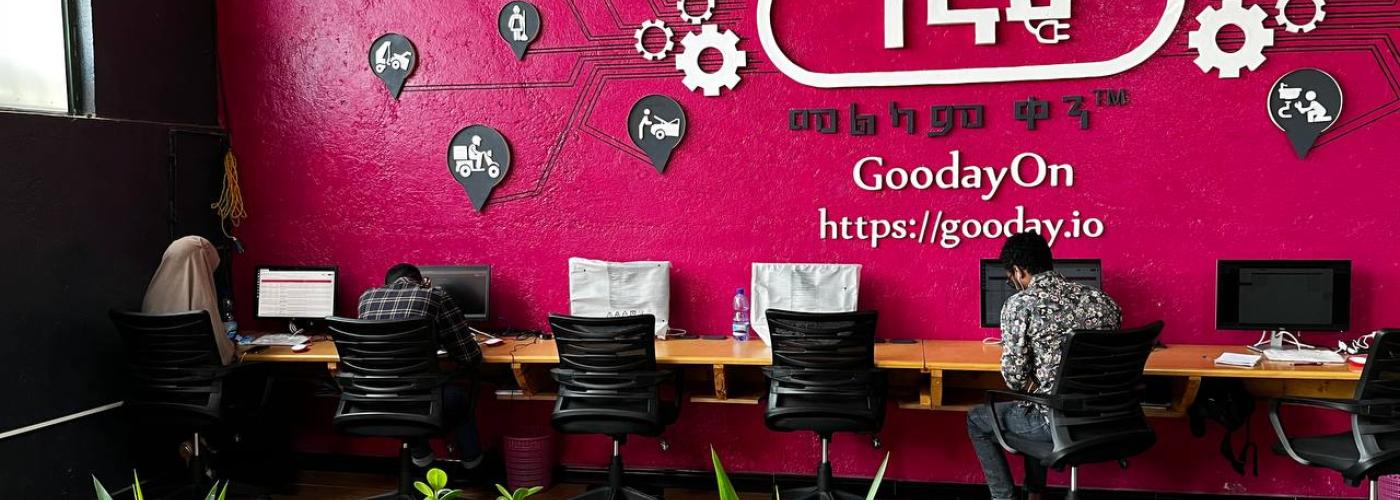Why Would a Poverty Reduction Program Do Something That’s Not Pro-poor? Digital Development in Ethiopia
Image

This blog was authored by Jody Delichte, Ben Taylor, Solyana Amsalu.
For any new technology, the early adopters are unlikely to be those at the bottom of the pyramid. This is even less likely where adopting that technology requires infrastructure, asset ownership, skills, and other preconditions. For programs that explicitly aim to benefit the poor, there is often a question of whether to support business models that do not immediately appear to benefit them.
This is the dilemma LIWAY has been facing in engaging with the nascent (embryonic by regional standards) market of digital development in Ethiopia. In this market, we came down on the side of ‘build it, and they will come,' and this blog explains why.
Pushing out the access frontier versus starting anew
As market systems development practitioners, we often must ask ourselves whether creating impact for poor populations is best achieved in a given context by pushing out the access frontier or starting over with bottom-up solutions. In most cases, pro-poor market development requires a separate ‘bottom-up’ rather than a ‘trickle-down’ approach.
Take inclusive banking as an example. Banking products that have existed for a long time for more affluent populations do not work for the poor. The poor need different products that meet their specific needs. Extending access to existing products may increase the overall proportion of the market accessing them, but you’re unlikely to reach poor populations over time.
In the case of digital development in Ethiopia, certain conditions made pushing out the access frontier a valid approach for achieving impact. This includes the rapid pace of change and trajectories seen in other markets. The use of mobile phones, even if only basic phones, is increasing among the poor, and lower-cost smartphones are becoming available in some markets, as are the plethora of uses for them.
Therefore, new digital services may impact more middle-class populations in the short term, but access is within reach of poor populations in a realistic timeframe. And inclusion can be accelerated.
Accelerating inclusion through bridge building
LIWAY is supporting the development of digital services that have the potential to impact large numbers of people – and in the longer-term, many poor women and youth. This includes online job matching, which is likely less inclusive as it is currently suited to those with a better access on the supply side and those who can pay a margin through higher wages on the demand side. It also includes gig connection platforms, which are likely more inclusive in the short term, where profits are made through the volume of transactions and are suited to small and unskilled labor. We are also supporting platforms for micro and small enterprises (MSEs) to market products online and access information to help grow their businesses.
Digital services such as these are likely to be accessed initially by more middle-income populations that can afford mobile devices and data and are digitally literate. But we are ensuring poor women and youth also benefit, even if not initially through digital channels. With the online job matching platform, for example, we have supported the development of mobile job corners, which enable job seekers who lack digital connectivity or literacy to be onboarded and linked with jobs in-person.
We are also ensuring that those with basic mobile phones and low digital literacy are included by supporting the expansion of services to include USSD and SMS. We have also supported the development of a call center associated with the gig connection platform to onboard those unfamiliar with the technology.
In addition, we are supporting the provision of technical training associated with digital services. For example, training is provided to increase the use of both the digital marketing platform and the MSE information portal by poor women and youth.
The expectation is that by helping service providers build outreach in a practical way for poor women and youth now, we can ensure inclusion in the short term and build a critical mass for the services. We expect that as more poor women and youth use the services and increase their incomes, and as technology becomes more accessible, there will be a greater shift towards digital access.
Essentially, we are building a bridge between where poor people are now and where we want them to benefit from digital services.
Speeding up the pace of bridge crossing
The pace at which poor people cross the bridge can be sped up through other interventions addressing systemic constraints. These include advocating for inclusive policies and regulations related to affordable access and Know Your Customer (KYC) requirements. It also includes increasing and improving digital skills delivery through existing institutions and addressing social and cultural barriers that limit women’s access to technology.
We are exploring some of these areas in our efforts to ensure there is an inclusive pathway for digital services, which may not seem pro-poor at the outset but have the potential to benefit large numbers of poor women and youth.
For more information, visit www.liway.org.
LIWAY (Livelihoods Improvement for Women and Youth) is funded by the Swedish International Development Cooperation Agency (Sida) and the Embassy of the Kingdom of the Netherlands (EKN). The program is implemented by a consortium of partners composed of SNV Netherlands Development Organization, Mercy Corps, TechnoServe, and Save the Children International. LIWAY is technically supported by Agora Global, an international consulting, training and research firm specialized in systemic change for inclusive development.


